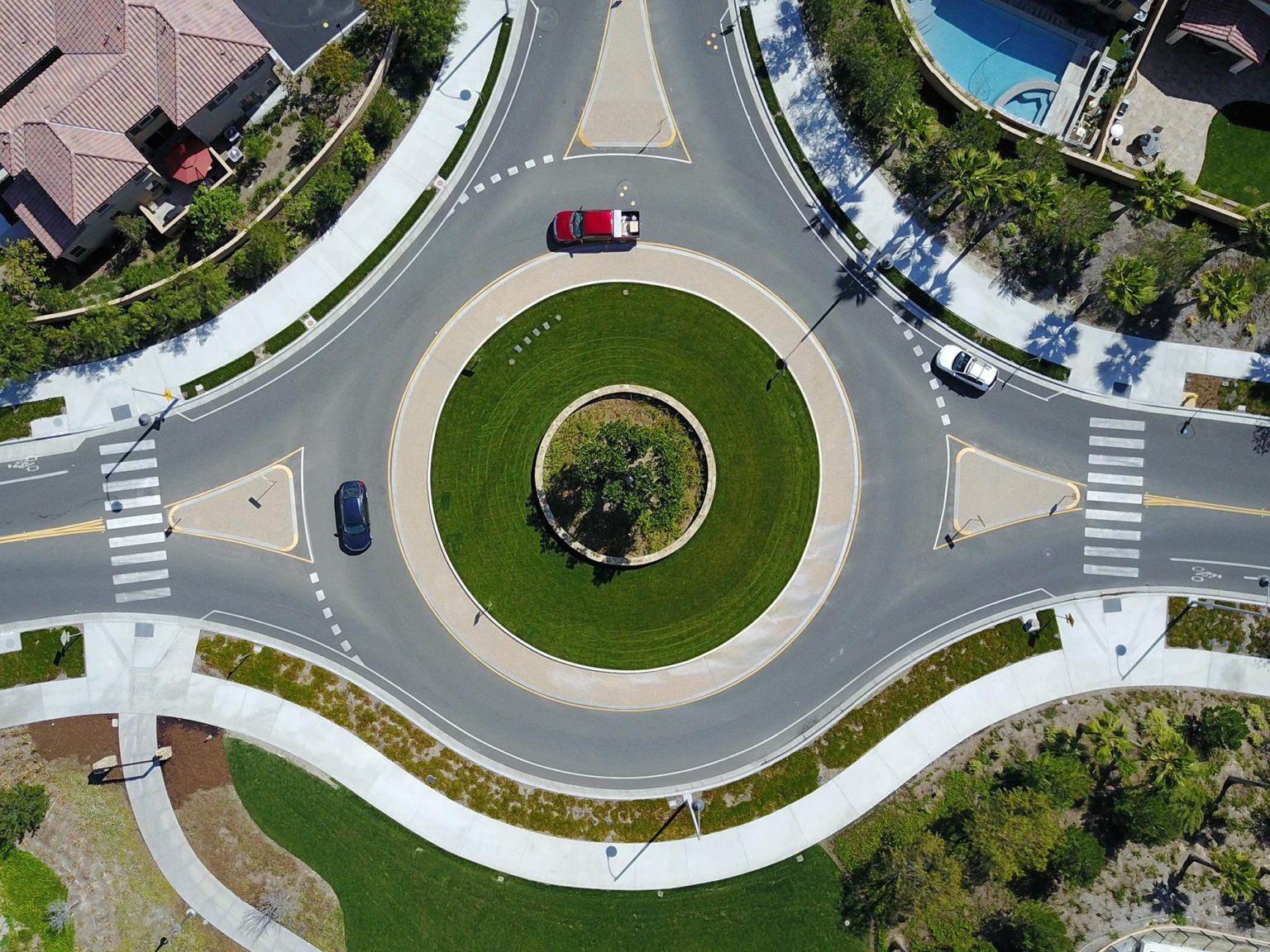New information from the Insurance Institute for Highway Safety (IIHS) points out that roundabouts are safer than traffic signals and stop signs. Roundabouts are one of 20 evidence-based safety countermeasures recommended by the Federal Highway Administration.
Studies of intersections in the United States converted from traffic signals or stop signs to roundabouts have found reductions in injury crashes of 72-80 percent and reductions in all crashes of 35-47 percent.
The logic comes down to engineering. The tight circle of a roundabout requires drivers to slow down so they can safety maneuver around the circle. Because of the ingress and egress of the roundabout’s design, right-angle, left-turn, and head-on collisions are unlikely.
Modern roundabouts build on the traditional rotary design. According to IIHS, the new style of roundabout requires vehicles to negotiate a sharper curve to enter resulting in slower speeds within the circle.
According to IIHS, research shows that traffic flow improves after intersections are converted to roundabouts. Additionally, there is less vehicle idling, which results in fewer vehicle emissions at the location.
Older traffic circles sometimes have traffic signals dictating the right of way but most modern ones only have yield signs. Some modern roundabouts feature flow-through lanes which allow shortcutting for partings simply going a quarter of the way around.
Roundabouts aren’t just safer for vehicles. They have distinct advantages for pedestrians as well as they are able to walk on sidewalks around the perimeter rather than crossing only one direction at a time. Crossing distances are usually shorter than they would be during a traditional frolic through the roadway and vehicles are frequently moving slower than they usually would.
What we now know as the roundabout gained popularity in the United Kingdom in the 1960s and is seeing expanded use throughout the U.S. and Europe in modern times. The first modern roundabouts were popularized in Nevada in the 1990s.
While there are benefits for motorists and pedestrians, it comes at the cost of cyclists who are often required to ride in the road and can find themselves caught up amongst vehicles in the rotary when speciality lanes are not present.
Cycling races often bemoan the uptick in rotaries, which cause hazards to racers at speed while crashes often happening as the peloton splits to traverse the obstacle and the surrounding lane dividers.
Some states, including New York and Virginia, have adopted “roundabout first” policies requiring that roundabouts be considered a preferred alternative when building new intersections or upgrading older ones.
Up-front construction costs of roundabouts can be pricey, but the overall cost of maintenance once built is generally cheaper, according to IIHS. There is also the benefit of a lessened cost of police and firefighter time spent dealing with accidents at high-risk intersections in addition to the human life toll.
The service life of a roundabout is significantly longer, approximately 25 years, compared with 10 years for a typical traffic signal.








